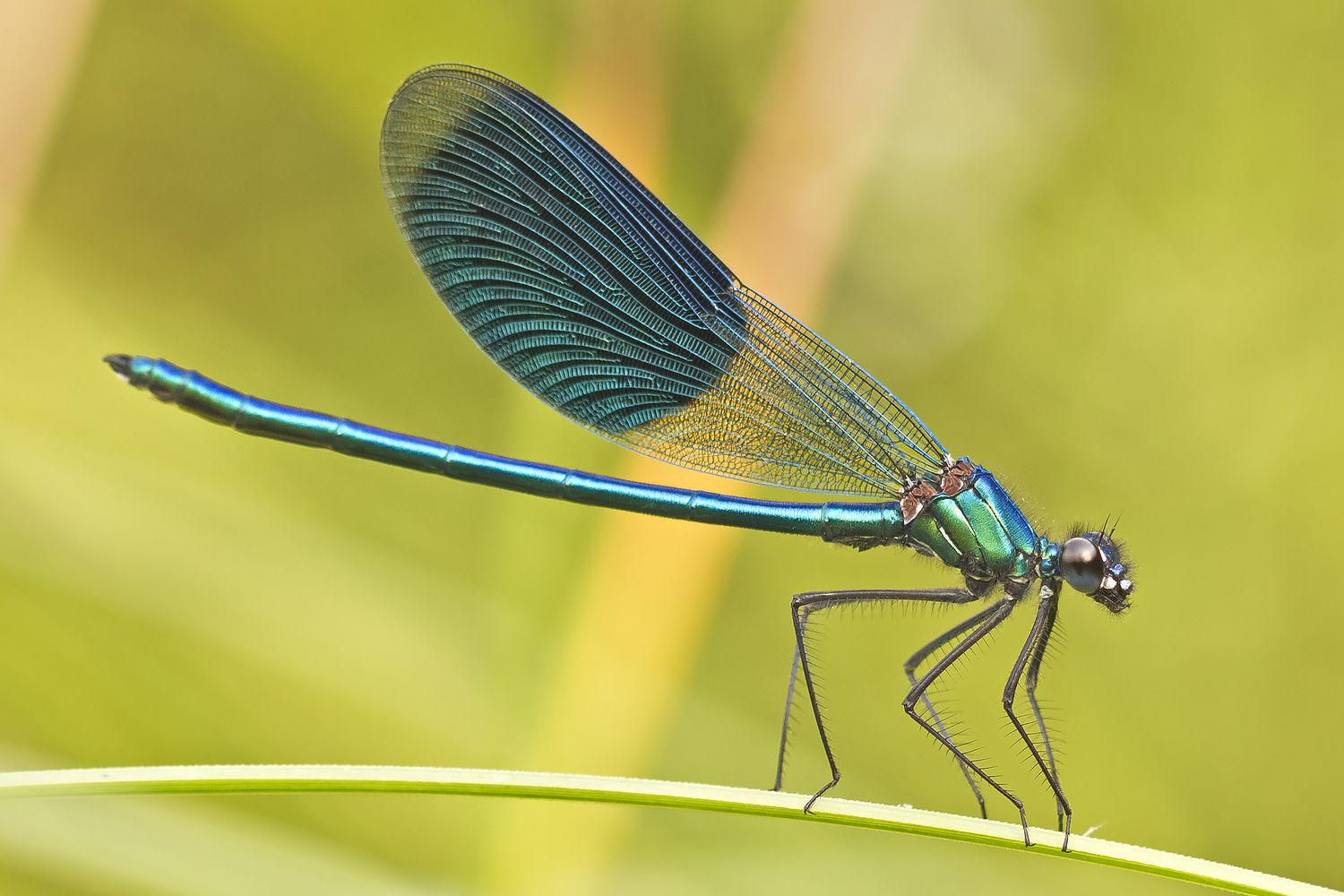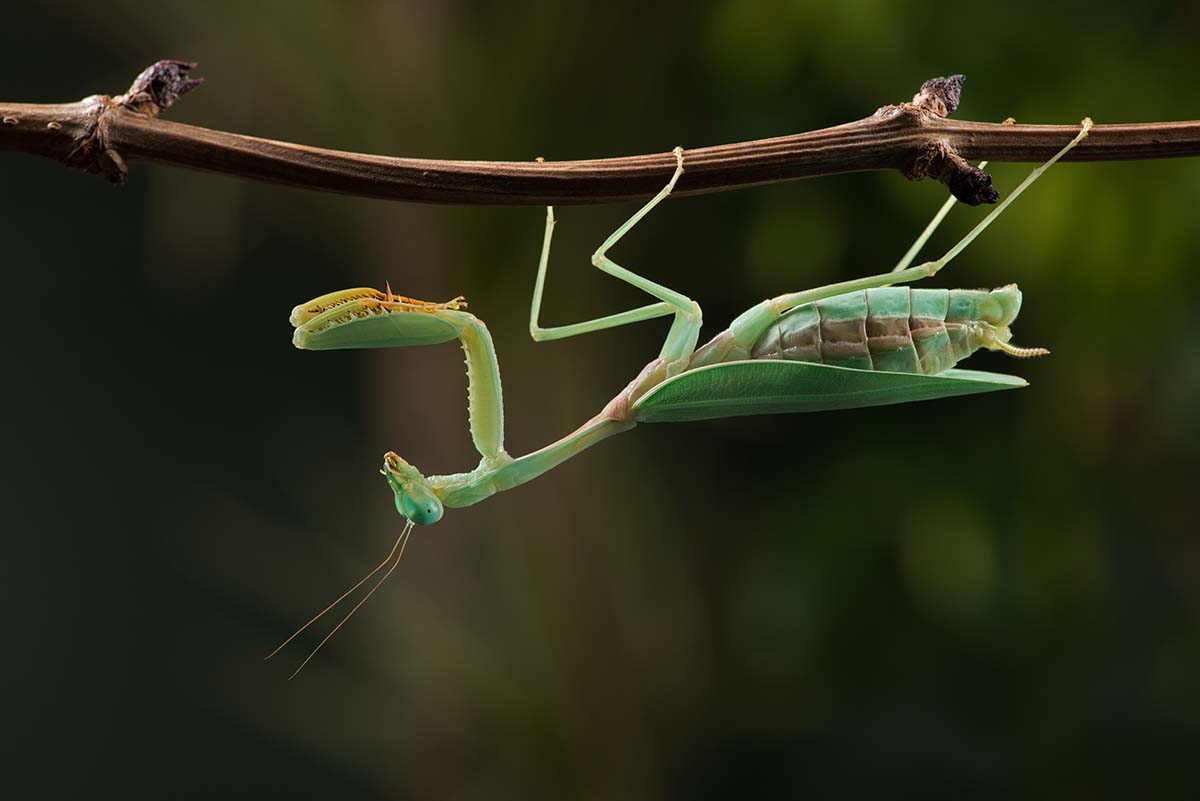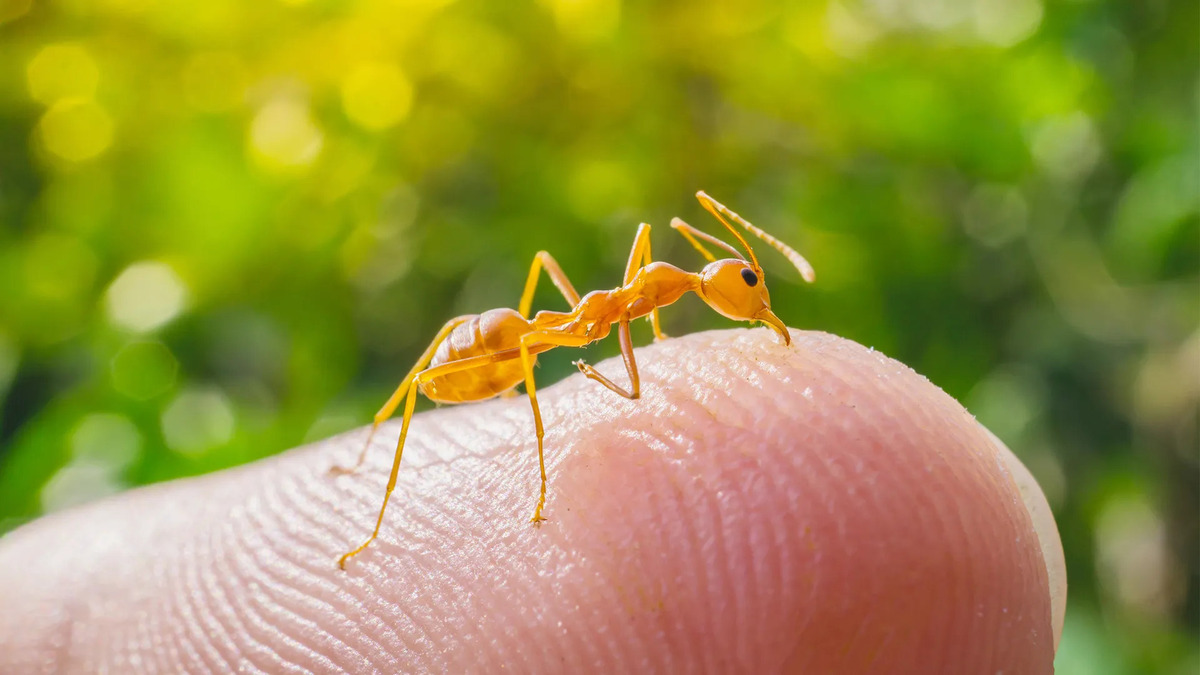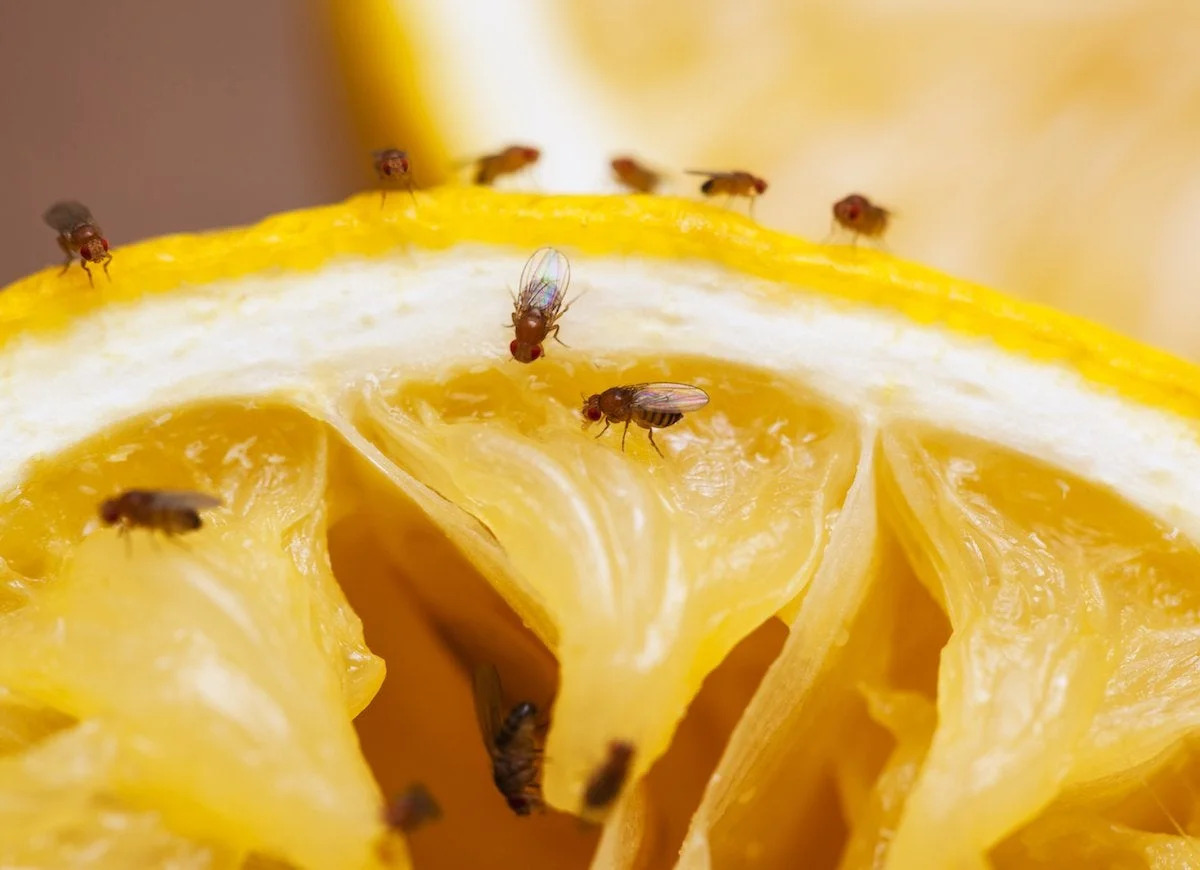Home>Gardening News and Trends>Latest News>How Many Constellations Are Named After Insects?


Latest News
How Many Constellations Are Named After Insects?
Published: December 12, 2023
Stay up to date with the latest news on how many constellations are named after insects. Explore the fascinating world of astrology and entomology in one place.
(Many of the links in this article redirect to a specific reviewed product. Your purchase of these products through affiliate links helps to generate commission for Chicagolandgardening.com, at no extra cost. Learn more)
Table of Contents
Introduction
When gazing up at the night sky, it’s easy to be captivated by the beauty and mystery of the stars. For centuries, humans have looked to the stars and created constellations to help navigate, tell stories, and understand the vastness of the universe. But did you know that some constellations are named after insects?
Constellations have been named after animals, mythological creatures, and even everyday objects, but insects have also found their place among the stars. From beetles to butterflies, bees to ants, these tiny creatures have left a mark on our celestial maps.
But why were insects chosen to be immortalized in the night sky? One reason could be their abundance and diversity. Insects are found in nearly every corner of the planet and come in a staggering variety of shapes, sizes, and colors. They are often associated with the natural world and are known for their fascinating behavior and adaptations.
Another reason could be the symbolism and cultural significance surrounding insects. In many cultures, insects are seen as symbols of transformation, resilience, and harmony with nature. They are often portrayed as industrious workers, delicate creatures, or even powerful beings. It’s no wonder that humans have been inspired by these tiny creatures and incorporated them into their celestial stories.
In this article, we will explore the constellations named after insects and delve into the stories and symbolism behind them. From beetle constellations to butterfly constellations, bee constellations to ant constellations, we will discover the rich tapestry of insect-inspired celestial wonders. So, grab your stargazing gear and let’s embark on a journey through the cosmos to encounter these captivating insect constellations.
Importance of Constellations
Constellations have held immense importance throughout human history. They have served as guides for navigation, provided a basis for storytelling and mythology, and even helped in scientific observations. By grouping stars into recognizable patterns, constellations have allowed humans to map the night sky and make sense of the universe.
One of the primary functions of constellations is navigation. Before the invention of modern technology, sailors, explorers, and travelers relied on the stars to navigate their way across vast oceans and unfamiliar terrains. Constellations provided a roadmap in the night sky, enabling mariners to determine their position and chart accurate courses. The well-known constellation, the North Star, or Polaris, has been particularly significant in guiding travelers in the Northern Hemisphere for centuries.
Constellations have also played a critical role in storytelling and mythology. Different cultures have assigned their unique stories and characters to these celestial patterns. The myths associated with constellations have been passed down through generations, serving as a way to explain natural phenomena, teach moral lessons, and preserve cultural heritage. For example, the constellation Orion is often associated with a mighty hunter in Greek mythology, and his story of divine intervention and love has captivated storytellers for centuries.
Beyond navigation and mythology, constellations have served as an essential tool for scientific observations. Astronomers have used constellations as reference points to study the movement, composition, and behavior of celestial bodies. By tracking the positions and patterns of stars within constellations, scientists have made significant discoveries about the universe, such as identifying star clusters, understanding the lifecycle of stars, and even detecting distant galaxies.
Moreover, constellations have sparked awe, wonder, and a sense of connection to the cosmos in people throughout history. The night sky has inspired poets, artists, and thinkers to contemplate the mysteries of the universe and explore humanity’s place within it. Constellations have acted as a reminder of the vastness and beauty of the cosmos, prompting us to ponder our existence and our role in the grand tapestry of life.
Overall, constellations are not merely random patterns of stars. They hold immense value in human history and culture. Whether used for navigation, storytelling, scientific exploration, or personal reflection, constellations have played a vital role in our understanding of the universe and our place in it.
Insect-Inspired Constellations
Among the various constellations that have been named after animals, insects have their special place in the celestial sphere. These insect-inspired constellations have added a touch of mystique and fascination to our maps of the night sky. Let’s explore some of these captivating celestial creatures.
One group of insect constellations that has grabbed attention is those named after beetles. The Scarab Beetle constellation, also known as Scarabaeus, can be found in the southern hemisphere. In ancient Egyptian mythology, the scarab beetle was a symbol of rebirth and transformation, closely associated with the sun god Ra. This constellation represents the eternal cycle of life and the power of rejuvenation.
An another mesmerizing insect-inspired constellation is the Butterfly constellation. Although there is no officially recognized constellation named “Butterfly,” various star patterns have been associated with these delicate creatures. These formations depict the intricate patterns and graceful flight of butterflies, symbolizing beauty and transformation.
Bees, known for their industrious nature and the vital role they play in pollination, have also been immortalized in the celestial realm. The Beehive Cluster, also known as Praesepe or the Manger, is a star cluster in the constellation Cancer. In Greek and Roman mythology, this cluster was believed to be a representation of a manger, and the stars themselves were thought to resemble bees swarming around it.
Ants, known for their teamwork, discipline, and strong work ethic, have their own place among the stars as well. The Antlia constellation, meaning “pump” in Latin, was named by French astronomer Abbé Nicolas Louis de Lacaille in the 18th century. It represents a tool used by astronomers to draw water from wells, symbolizing the diligent and methodical nature of ants.
These insect-inspired constellations not only add diversity to our celestial maps but also provide a deeper connection to the natural world. They remind us of the intricate and fascinating creatures that exist on Earth and inspire us to appreciate and respect the wonders of the insect kingdom.
So, the next time you look up at the night sky, take a moment to appreciate the beauty and symbolism behind these insect-inspired constellations. They serve as a testament to the rich storytelling and cultural significance that humans have associated with insects throughout history.
Beetle Constellations
Beetles, with their fascinating shapes, colors, and behaviors, have captured the imagination of humans for centuries. It’s no wonder that these tiny creatures have found their way into the celestial realm. Let’s explore some of the captivating beetle constellations that adorn our night sky.
One of the notable beetle constellations is the Scarab Beetle constellation. Scarabaeus, as it is also known, is a constellation found in the southern hemisphere. This constellation pays homage to the scarab beetle, which held great significance in ancient Egyptian mythology. The scarab beetle was believed to be a symbol of rebirth and transformation, closely associated with the sun god Ra. The Scarab Beetle constellation represents the eternal cycle of life and the power of rejuvenation.
The Hercules Beetle constellation is another beetle-inspired formation. Although not an officially recognized constellation, the Hercules Beetle refers to a group of stars that form the shape of the mythical creature. The Hercules Beetle, known for its incredible strength and impressive horns, is often associated with the mythical hero Hercules, known for his extraordinary feats of strength. This constellation pays tribute to the awe-inspiring power and resilience of these beetles.
Another intriguing beetle-inspired constellation is the Ladybug constellation. Known for their vibrant colors and cute markings, ladybugs have captured the hearts of many. While not an official constellation, various star patterns have been associated with these beloved insects. Ladybugs are often seen as symbols of good luck and protection, and their presence in the night sky adds a touch of whimsy and positivity.
The Beetle constellations serve as a reminder of the incredible diversity and beauty that can be found among these small creatures. Beetles come in a multitude of shapes, sizes, and colors, showcasing nature’s creativity and adaptability. They play essential roles in ecosystems, ranging from pollinators to decomposers, contributing to the balance and health of the environment.
These beetle constellations also highlight the cultural significance of beetles in various societies. From ancient Egyptian mythology to modern-day symbolisms, beetles are often associated with transformation, protection, and luck. They have been revered as symbols of resilience, strength, and the potential for growth and change.
So, the next time you look up at the night sky, take a moment to appreciate the celestial beauty of beetle constellations. They not only provide a unique and enchanting backdrop to our stargazing adventures but also serve as a testament to the awe-inspiring wonders of the natural world and the deep connections we have with it.
Butterfly Constellations
Butterflies, with their delicate wings and graceful flight, have long been a source of fascination and inspiration for humans. It’s not surprising that these ethereal creatures have also been immortalized in the night sky as butterfly constellations. Let’s embark on a journey through some of these enchanting celestial formations.
While there is no officially recognized constellation named “Butterfly,” various star patterns have been associated with the shape and flight of these beautiful insects. These formations depict the intricate patterns and graceful movement of butterflies, evoking a sense of wonder and awe.
One example of a butterfly-inspired constellation is found in the southern hemisphere. The Southern Butterfly constellation, unofficially named Crux Australis, is a prominent formation representing a butterfly in flight. This arrangement of stars invites us to marvel at the celestial dance of this enigmatic creature and appreciate the elegance and beauty it embodies.
In addition to the Southern Butterfly, various other star patterns across the night sky resemble butterflies. These formations can be seen in different constellations, such as Orion, Cygnus, and Scorpius, among others. The intricate patterns of stars mimic the delicate wings and intricate markings of real-life butterflies, serving as a visual reminder of the ethereal nature of these remarkable creatures.
Butterfly constellations hold significance beyond their celestial splendor. Butterflies are often associated with transformation and metamorphosis in many cultures. Their life cycle, from caterpillar to chrysalis to graceful adult, represents the potential for growth and change. The presence of butterfly constellations in the night sky reminds us of the ever-changing nature of life and the beauty that can emerge from personal transformation.
Furthermore, butterflies are seen as symbols of beauty, grace, and fragility. Their colorful wings and seemingly weightless flight inspire a sense of awe and bring a touch of whimsy to nature. Likewise, butterfly constellations invite us to embrace the magic and charm of the natural world and find solace in its ephemeral wonders.
So, the next time you gaze at the stars, look out for the butterfly constellations gracing the night sky. They serve as a reminder of the fleeting yet magnificent nature of life and encourage us to embrace the transformative power of growth and change, just like the delicate wings of a butterfly.
Bee Constellations
Bees, known for their industrious nature and vital role in pollination, have inspired admiration and awe in humans for centuries. It’s no wonder that these hardworking creatures have also made their way into the celestial realm. Let’s explore the fascinating world of bee constellations that adorn the night sky.
Although there is no officially recognized constellation named “Bee,” the night sky contains star formations that pay homage to these essential insects. The most prominent among these is the Beehive Cluster, also known as Praesepe or the Manger. This star cluster can be found in the constellation Cancer and is visible to the naked eye on a clear night.
In Greek and Roman mythology, the Beehive Cluster was associated with a manger, and the stars within the cluster were thought to resemble bees swarming around it. This celestial depiction of bees highlights their importance as pollinators and the central role they play in sustaining ecosystems and supporting plant life.
Furthermore, bees are often associated with hard work, dedication, and the concept of community. They exemplify a tireless work ethic and a synchronized approach to accomplishing tasks. Their collaboration within the hive is essential for the survival and success of the entire colony.
The presence of bee constellations in the night sky serves as a reminder of the importance of these small creatures and the interconnectedness of all living beings. Bees not only provide us with honey and beeswax but also play a crucial role in pollinating agricultural crops and native plants, contributing to the maintenance of biodiversity and a healthy ecosystem.
Moreover, bee constellations symbolize the harmony and balance that can be found in nature. They remind us to appreciate the beauty and intricate workings of the natural world and to strive for sustainable practices that support the well-being of bees and other pollinators.
So, the next time you gaze up at the night sky, take a moment to pay homage to the bee constellations. They serve as a testament to the industrious nature of bees and their vital role in maintaining the delicate balance of our planet’s ecosystems. Let them inspire you to find ways to support and protect these remarkable creatures and the environments they thrive in.
Ant Constellations
Ants, known for their teamwork, discipline, and strong work ethic, have left their mark on the celestial sphere as well. While there may not be a constellation named specifically after ants, their influence can be seen in the starry tapestry above. Let’s delve into the fascinating world of ant constellations.
One particular star grouping associated with ants is the Antlia constellation. Named by French astronomer Abbé Nicolas Louis de Lacaille in the 18th century, Antlia means “pump” in Latin. This constellation symbolizes a tool used by astronomers to draw water from wells. Its shape and name pay tribute to the diligent and methodical nature of ants and their tireless contributions to their colonies.
Just as ants work together as a unified force, the concept of community is central to the symbolism of ant constellations. Ants are renowned for their cooperative behavior, working collaboratively to achieve common goals. The presence of ant-inspired constellations in the night sky serves as a reminder of the power of unity and the significant impact that can be achieved when individuals come together to work towards a shared purpose.
Ant constellations also symbolize the resilience and adaptability of these tiny creatures. Ants are known for their ability to overcome obstacles, navigate complex terrain, and adapt to changing circumstances. They demonstrate the importance of perseverance and the ability to think and react swiftly in the face of challenges.
Furthermore, ant constellations serve as a reminder of the intricate and interconnected nature of ecosystems. Ants play crucial roles as decomposers, seed dispersers, and predators, contributing to the balance and health of their environments. Their presence ensures the efficient functioning of ecosystems and helps maintain the overall biodiversity of our planet.
Observing the ant constellations can also inspire us to appreciate the beauty and order that exists in the natural world. The flawless coordination and organization seen in ant colonies reflect the intricate patterns and delicate balance that can be found throughout the universe.
So, the next time you gaze at the night sky, take a moment to reflect on the symbolism and significance of the ant constellations above. Let them serve as a reminder of the power of community, resilience, and harmony with the natural world. Just as ants work effortlessly in unison, may we too find ways to come together and make a positive impact on our planet.
Conclusion
The world of constellations is a fascinating and diverse realm, encompassing not only animals, mythology, and everyday objects, but also insects. Insects have found their place among the stars, with beetles, butterflies, bees, and ants inspiring the creation of celestial formations.
These insect-inspired constellations add a touch of wonder and symbolism to our night sky. They reflect the beauty, diversity, and significance of insects in our natural world and human cultures. Whether it’s the transformational power of the scarab beetle, the ethereal flight of butterflies, the industriousness of bees, or the unity and resilience of ants, each insect constellation tells a unique story.
Constellations, in general, hold immense importance throughout human history. They have guided navigators, sparked imaginative storytelling, and served as references for scientific observations. They remind us of our place in the vastness of the universe, connecting us to the wonders of the natural world and inspiring a sense of awe.
As we gaze up at the night sky and explore the insect-inspired constellations, we are reminded of the intricate and interconnected nature of our planet. Insects play vital roles in maintaining ecosystems, supporting biodiversity, and providing essential ecological services.
Moreover, these celestial insects symbolize qualities and values that humans hold dear – transformation, resilience, harmony, and community. They inspire us to appreciate the beauty and wonder of nature, embrace personal growth and adaptation, and work together for a common purpose.
So, the next time you find yourself stargazing, remember the insect constellations twinkling above. Let them spark your curiosity, ignite your imagination, and deepen your connection to the natural world. Take a moment to reflect on the intricate relationships, lessons, and inspirations that can be found in the celestial representation of these remarkable insects. May they guide and inspire us to be stewards of the Earth, cherishing the wonders of the insect kingdom and preserving the delicate balance of our planet for generations to come.










